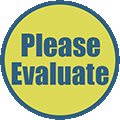Health Assessments of the Infant (0 through 11 Months)
In the first year of life, routine visits are scheduled during the first and second weeks of life, and at 2, 4, 6, 9 & 12 months.
The infant's first visit to the office may be as early as 2-3 days of age. Healthy babies are discharged from the nursery after 24 to 48 hours. This is a critical time for establishment of breastfeeding and assessment of problems such as jaundice. If the child is only a few days old, review the physical examination of the newborn and familiarize yourself with some of the common neonatal medical problems before you begin the infant health maintenance exam.
More Information
Complete family medical and social history: Information about the family history can best be obtained by beginning with open-ended questions such as, "Tell me about any medical problems your family members may have had?" You should inquire about the immediate family and grandparents. Extend the pedigree if the family has a history of hereditary diseases, or if other family members play an important role in the child's life.
Immunization Record: The basic series of immunizations recommended by United States public health experts can be found here, but many clinics vary the recommended schedule, depending on their sources of funding, whether they have access to new multiple antigen vaccines, and if they are experiencing shortages. Ask your preceptor for a copy of the currently recommended schedule at your clinic site.
The first visit to the office will require a complete family medical and social history, including family history of illnesses, pregnancy history, and birth history.
Print a current copy of the immunization schedule so you can consult it and learn which immunizations are given when. Recommendations for immunizations change often, so maintain your updates frequently.
Review the Infant Assessment worksheet. We recommend that you spend some time exploring the "Birth to 11 Month Worksheet" and the related information before you examine your first patient.




